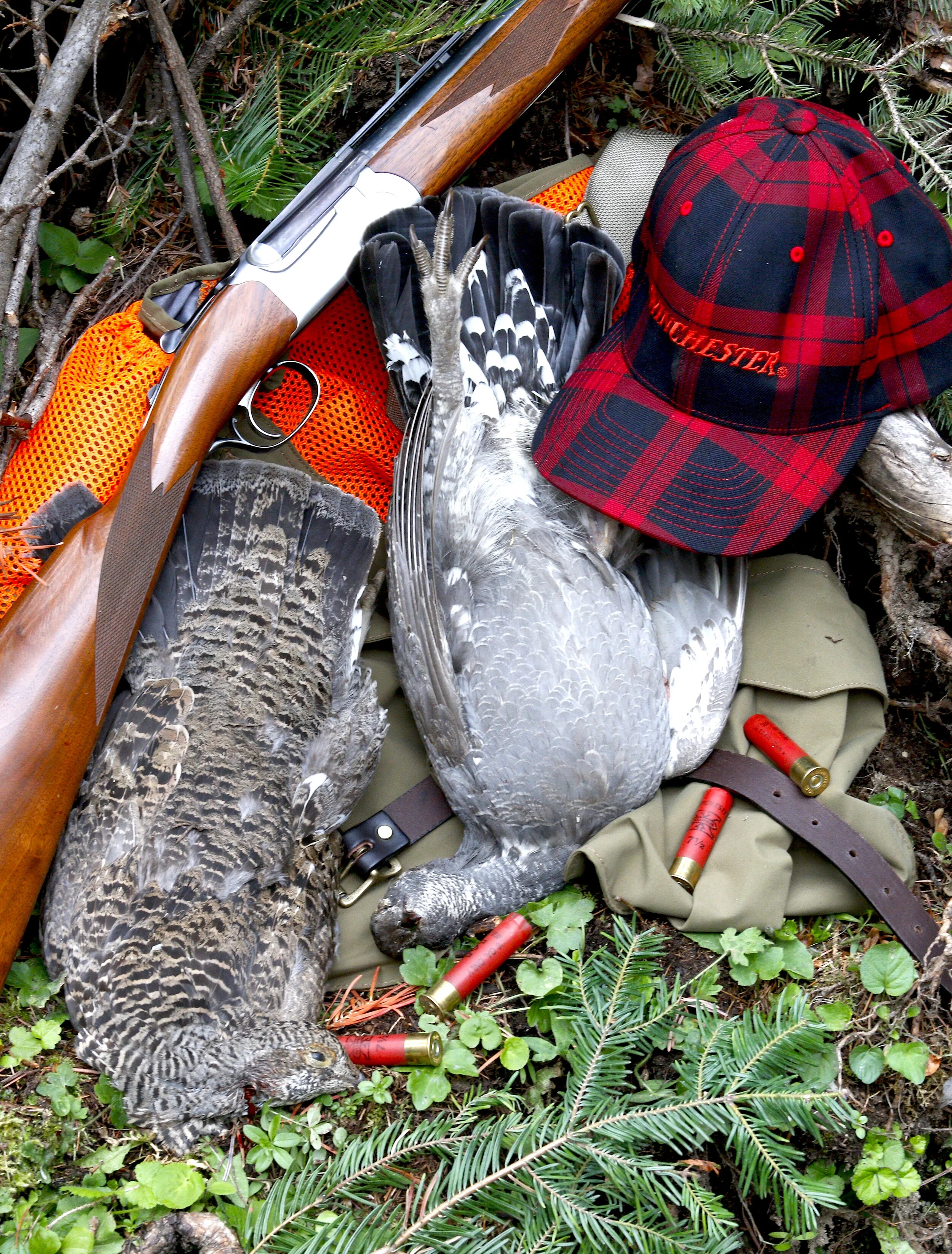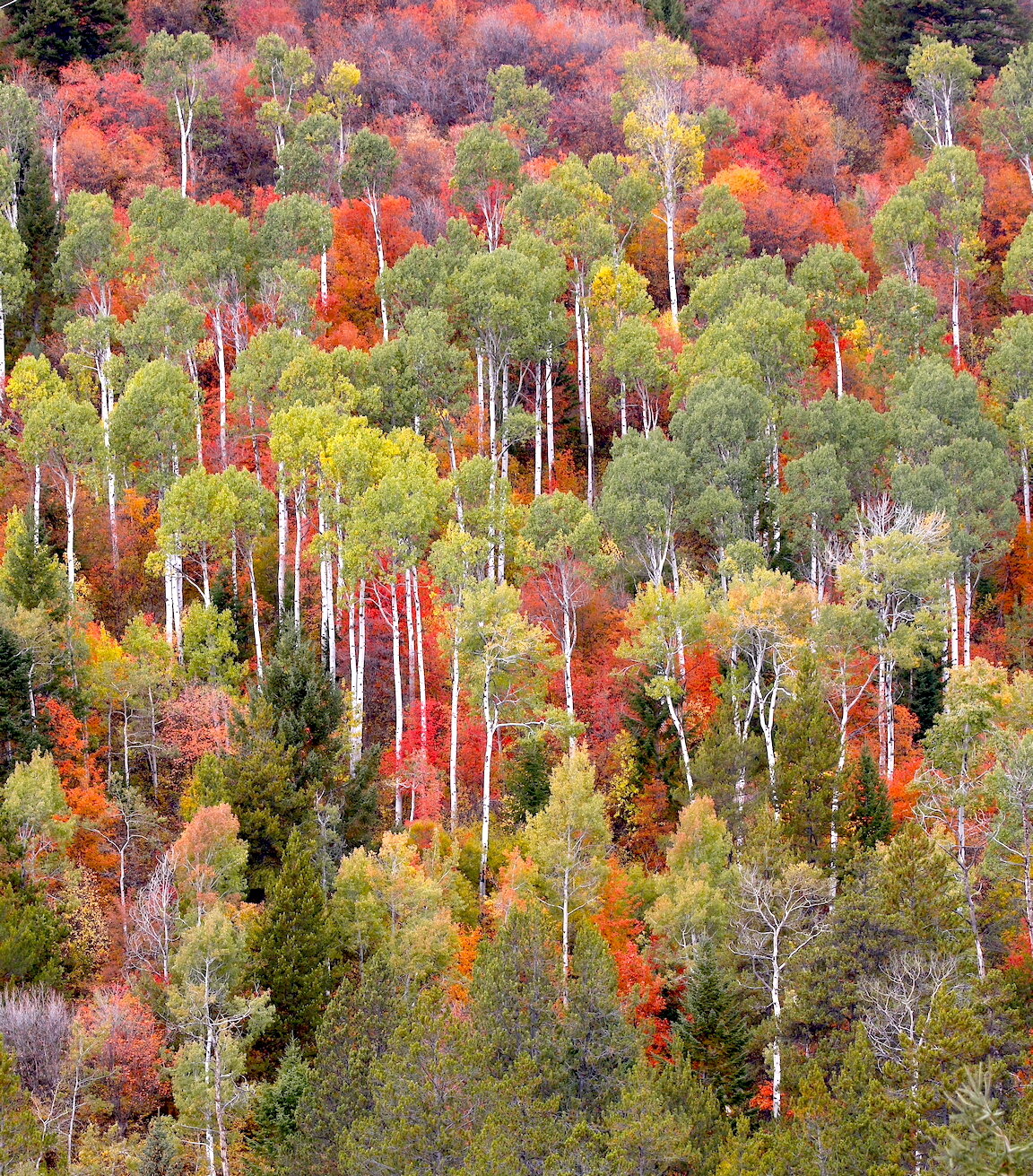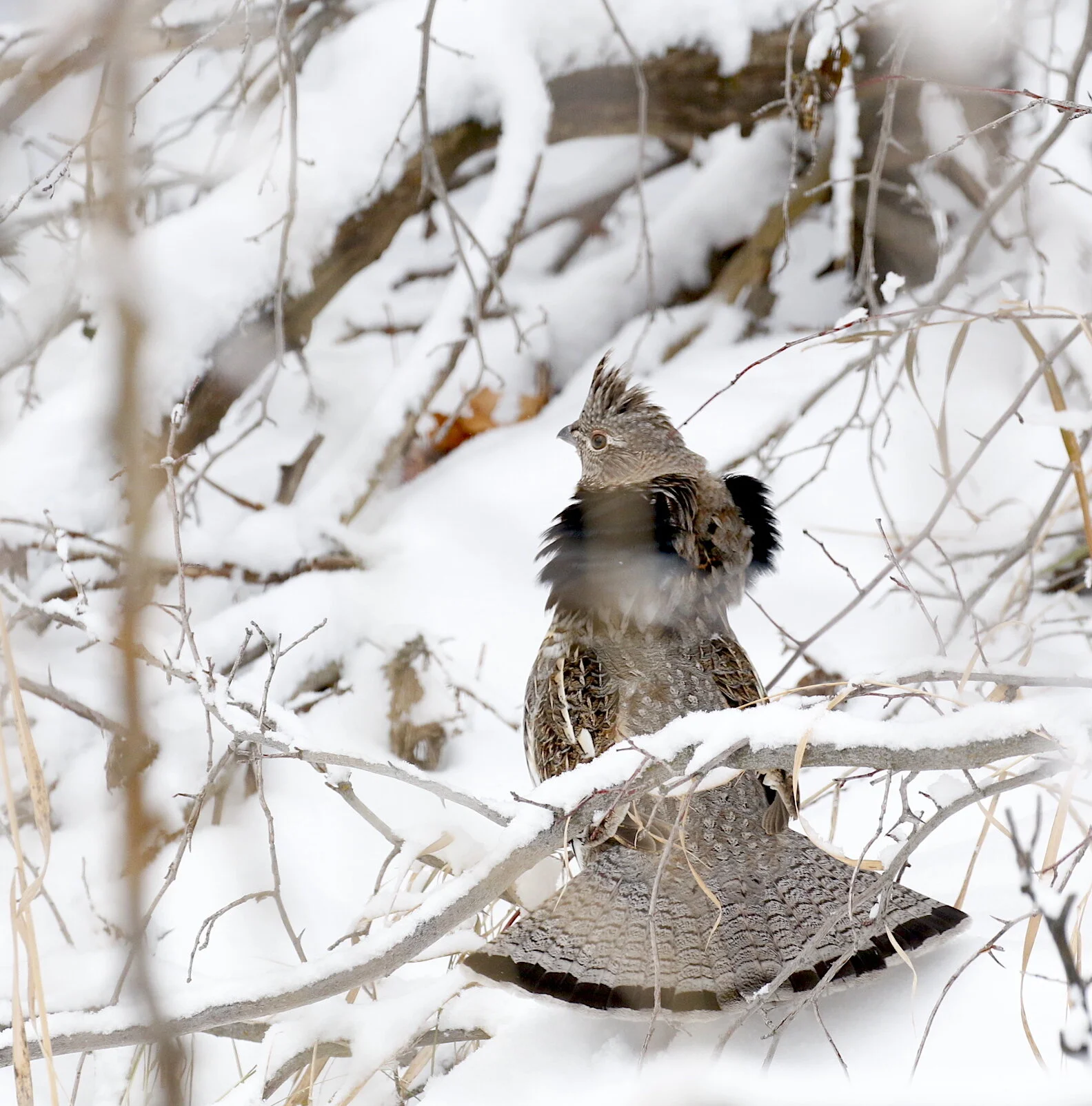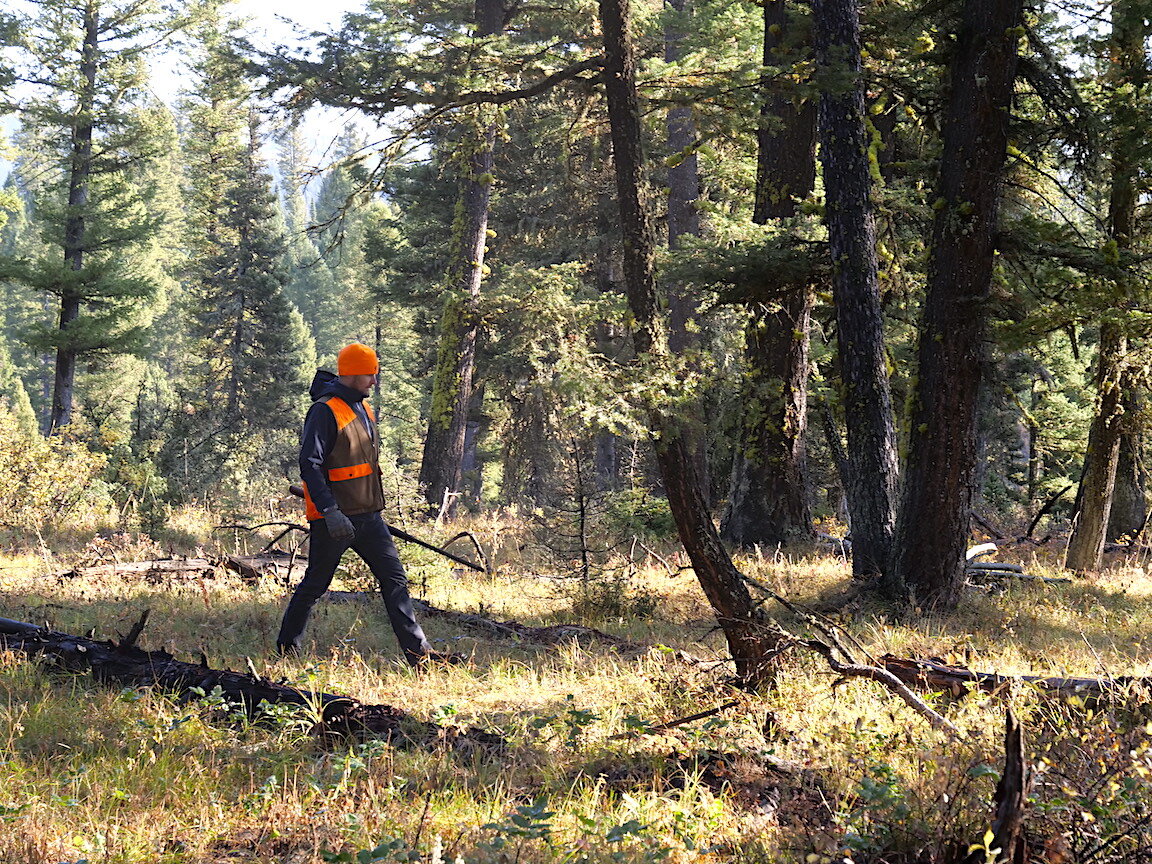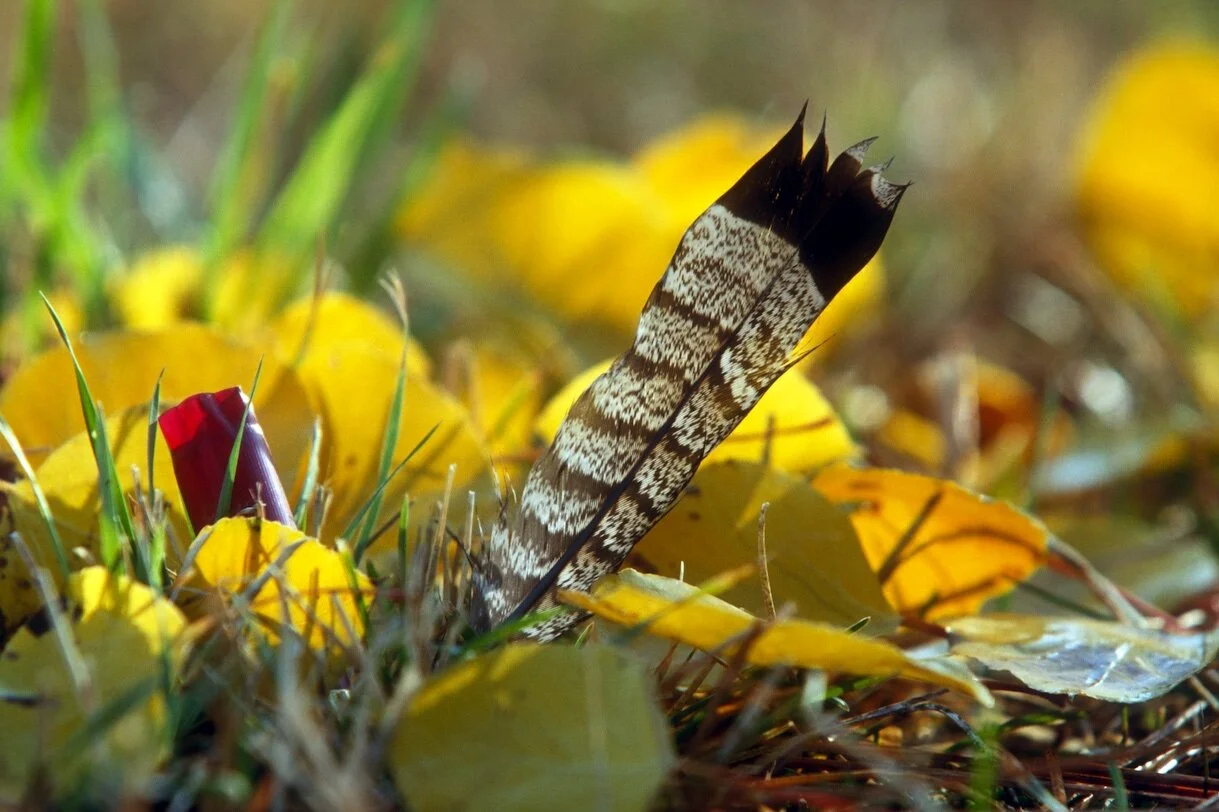How to Hunt Western Forest Grouse for Free!
A brace of dusky grouse taken in early September with a Ruger Red label over/under 28 gauge.
Okay I lied. It’s not absolutely free. You have to buy a hunting license. But the hunting grounds are wide open. No need to ask for permission. No need to pay an outfitter. Just strap on your boots and start hunting.
Blue grouse (dusky grouse is the new name,) ruffed grouse, and spruce grouse are lumped into the forest grouse designation across the Rocky Mountain West. They can be found from river bottoms to mountain tops from Washington, Idaho, and Montana down to California, Nevada, and New Mexico on millions of acres of National Forest lands pretty much wide open for hunting and camping.
Finding Grouse Hunting Land
Aspen, fir, and mountain maples. Looks like ruffed grouse habitat to me. And even if it isn’t, the color alone is worth the hunt.
To locate open public lands, consult any map showing land ownership. DeLorme Mapping state maps and gazeteers give a great overview state-by-state. Individual Forests sell maps of their districts that are more detailed. Phone apps like HuntStand show ownership right down to the acre, but you’ll want to save some for offline use because in many mountain locations cell service is spotty at best.
The final method for locating public forest lands is to drive into the mountains until you see a Forest Service sign! But there could still be private in-holdings, so watch for that.
Finding the Forest Grouse
State Fish & Game website are the place to start.
Start your bird search with a thorough search online of your chosen hunting State’s Fish & Game website. Most will provide maps outlining where the species are found. Then do some basic research on biology and behavior. Ruffed grouse, for instance, are associated with moist deciduous woods near streams — willow, aspen, mountain ash, dogwood, hawthorn and similar broadleaved trees. You’ll find ruffed grouse in conifer cover, too, but not as abundantly. Berries are a big draw. I’ve found isolated hawthorn trees holding five ruffed grouse at a time.
Ruffed grouse are our most recognizable forest grouse, but don’t wait until the snow flies to hunt them. September and October are the best months.
Blue or dusky grouse are usually in a mix of conifers, open grass and sage ridges, and nearby streams. They live quite low, right down to river line, in summer, but begin moving ever higher as fall progresses. They winter quite high and spend most of their time perches in pine, fir and spruce trees. Hunt them early or not at all! Early in the season (Sept.) mature males often hang around open stands of old growth pines and Doug firs on otherwise bare ridges.
Spruce grouse are the hardest to find, northern Idaho and Montana being the southern fringe of their range. I consider these a bonus bird and usually find them above 7,000 feet. Or in Alaska! They seem to like a mix of conifers and deciduous shrubs with moist areas or water nearby.
Forest Grouse Hunting Tactics
Classic dusky grouse edge habitat, a mix of open brush and grass on the edge of Doug fir and pine woods in canyon country. The setter was Cheyenne, Covey’s predecessor.
Just unleash the hounds! and start hiking. I’ve had good luck driving to high east-west ridges and hunting them down toward water, usually a stream or creek, sometimes a river. I’ll work the forest/meadow edges early when dusky grouse are on the ground foraging for cold grasshoppers as well as berries. I’ve found in their crops snowberries, mountain ash berries, clover, hawthorn berries, and rose hips. Anytime you start seeing berries, expect grouse. When I tire of searching for duskies, I’ll break over the top to zig zag down the north-facing slope, which is usually cooler and wetter, and work this down toward the bottom where there is likely water — and ruffed grouse.
This may sound lame, but one of the most productive tactics for finding birds is driving Forest Service roads and trails. It’s simply the most efficient way to cover lots of territory until you stumble onto some birds. Locals have traditionally potted birds right from the road, but if you’re interested in a real hunt, back off, loose the dogs, and hunt ‘em up.
Two or three hunters should be more successful than one because they can cover two or more sides of the tree. Forest grouse are pros at putting limbs and branches between themselves and a charge of shot. If your pointing dog indicates a bird is there, by that tree or bush, look the scene over and approach from what could be the blind side if you followed the dog’s nose. Pup should keep the bird from flying its direction, so you just need to cover the other.
Shooting Forest Grouse Well
This is challenging because of all the branches. Don’t let them distract you. Focus and focus hard on the bird, swing through it and try to ignore the branches or they’ll stop your swing and you’ll surely miss. Unless conifer boughs are particularly dense, enough shot pattern should get through to tumble the birds. Obviously you’ll want to shoot when you have a clear view, but all of this happens so quickly that sometimes you can’t stop yourself from shooting just as your barrel sweeps over a big branch or even a trunk. An old grouse hunting buddy called it “spray and pray.”
With experience you’ll begin to see upcoming openings in your peripheral vision and take your shots appropriately. It’s easier to do than describe, but it works. Always follow up shots. Many times you’ll hit a bird without seeing the results. Sometimes they fly a distance without falling, but then drop, mortally wounded. A good retrieving dog can really make a difference.
Guns and Shells for Forest Grouse Hunting
Cheyenne, the Ruger 28 gauge and a nice bag of duskies for dinner.
Any shotgun you can handle easily and quickly will suffice. I like 5.5 to 6-pound 20- and 28 -gauges for their weight and quick handling. Forest grouse don’t shrug off shot the way a big rooster pheasant seems to. I’ve found #7 1/2 shot effective, sometimes #6. Larger #5 and #4 shot might be called for to break through more foliage, but then you’re throwing fewer pellets in a given payload weight. A higher number of smaller pellets seems the better bet.
Chokes should be IC and Modified. In some tight covers a cylinder choke might be best. Be ready to change should conditions warrant, but most years I start with IC and Mod. and end with them.
Autoloaders can save the day by holding an extra shell for any late flushing birds. Nothing’s quite so frustrating as hiking 2,000 feet and 10 miles for your shot, only to miss the first birds twice, then stand helplessly while two more flush at your feet in the clear in slow motion.
These Boots Were Made for Climbing
Kenetrek Mountain Extreme boots are comfortable enough for flat ground, stiff and durable enough for steep mountains.
In general, pretend you’re elk hunting in the mountains. Because the terrain and habitat are the same. I’ll list a Kenetrek Mountain Extreme and LOWA Hunter GTX Evo Extreme as examples of superior mountain boots. Yes, in some places you can get by with less aggressive formats, but these two should suggest the potential for what you might get into. You want this kind of ankle support, rock-proof footbed, deep lugs for gripping small rock protuberances, and sharp, hard edged soles for digging sideways into steep slopes.
Some Rocky Mountain creek valleys are lush and gently rolling, but more dusky grouse habitat, especially, seems steep, rocky, and hard.
Be Bear Aware And More
Cougars, aka mountain lions, like forest grouse habitat, too.
There’s no need to stay home cowering in the closet, but be bear aware in much of the Rockies. Resurgent grizzly populations in the Greater Yellowstone Area, north ID and much of Montana are a threat. Griz attack, maul or kill several people a year there. They’ve learned that gun shots lead to elk or deer gut piles, so they often come running. You might consider wearing a can of bear spray on your belt (pepper spray.)
Cougars and wolves are a possibility, but neither is a big danger. Cougars are stealth hunters launching quiet attacks on unsuspecting prey. An active hunter or two with a busy dog or two usually spooks cougars. Two of my buddies and I have seen our dogs point or tree cougars.
Wolves are shy, reclusive and nearly impossible to spot. They seem to vacate the area as soon as they detect hunters. But they have been known to attack and kill hunting dogs, so you might want to make plenty of human noises as you hunt. And definitely keep an e-collar with locator on it (like the DT Systems RAPT 1450) so you can find Dog and call him back instantly. Pack three or four BB or buckshot loads just in case. It doesn’t happen often, but more than a few dogs have been attacked and killed by wolves since their reintroduction.
An e-collar like this DT Systems RAPT 1450 can help you keep Dog in range, call her back, and sound a locating tone.
The e-collar will be useful for teaching Dog to hunt closer, too, if necessary. It’s one thing to have an eager dog reach waaay out there in the Dakota grasslands, quite another if she goes over a ridge in dense forest. Keep her close for the first morning or day and hit the call-back button anytime he seems out of touch for too long.
Rattlesnakes are rare at elevation, but possible along lower streams. Have your dog snake-proofed, a process of getting pup to see, hear, and smell a de-fanged rattlesnake, then hitting the e-collar on a fairly high setting to teach a hard, but life-saving lesson. Any non-venomous snake can substitute for a real rattler, the only things missing being the rattle. This can be simulated with captures rattles, a can of small pebbles, etc. Research snake proofing and you may find better ideas. Try to hit Pup with a visual, olfactory and sound contact with the snake. Should be good for a lifetime of protection.
Sleeping One Off
Make your camp as simple or elaborate as you want. Sleeping is free, too.
You can camp pretty much anywhere in the U.S. Forests unless signs indicate otherwise. Generally old logging roads provide access deep into the mountains with plenty of pullouts and wide spots along the route where you can set up a comfortable camp. Tent, pickup camper, even some fair sized RVs can work. Many hunters are coming out in RVs towing something like a Polaris Ranger 4x4 for tooling along the smaller, steeper old roads and vehicle trails. We find it best to keep s simple camp unless and until we find good concentrations of birds. Then we might set up something more elaborate. Campfire, rain fly, chairs, lanterns. The works. Half the fun is camplife!
Eating Well
Ruffed and dusky grouse are light, tender and delectable. Just don’t over cook them. My simplest recipe is strip the meat, dunk in flour, and quick fry in hot oil a few minutes. Eat piping hot and save the extras for the next day’s cold lunch. Fantastic.
If you’ve longed for the freedom to roam with gun and dog, your National Forests are the place and forest grouse are the lure. Have at it.


